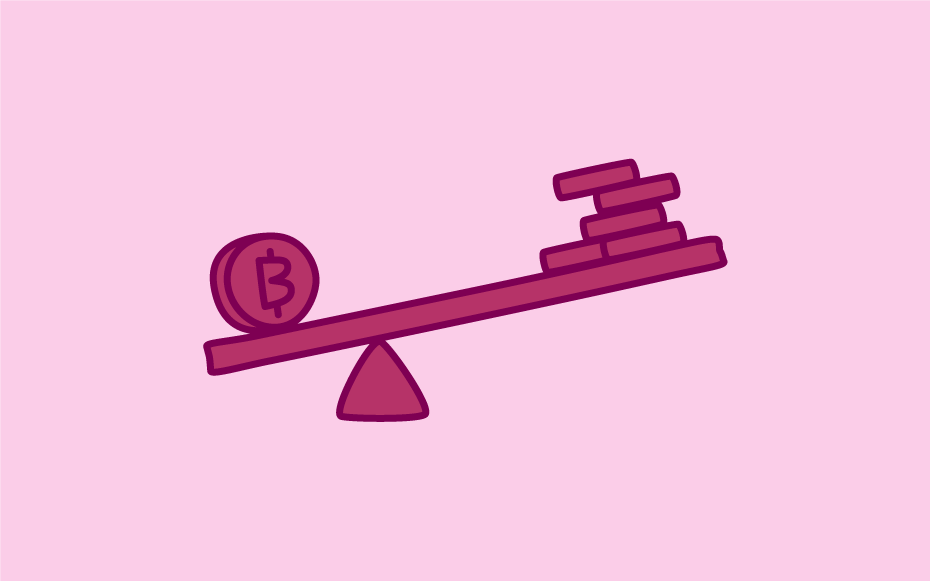With its high volatility, the cryptocurrency market presents considerable potential for profits. Although tracking long-term trends is often considered a stable tactic, it's not always the most lucrative. The majority of active traders concentrate their efforts on Bitcoin day trading. But, what does day trading entail? How can one utilize shorter timeframes effectively? What steps can you take to avoid depleting your investments within a day? And finally, which cryptocurrency day trading strategies are the most useful for intraday analysis?
Understanding Day Trading
Day trading in the realm of cryptocurrencies refers to a trading style where all transactions are performed within a single day.
Here are several key points to bear in mind:
The 'day' is defined not by your local time, but by the opening and closing times of the primary exchanges. As these major exchanges in America, Europe, and Asia are spread across various time zones, trading is possible around the clock.
To avoid incurring a security interest from the broker, positions are not carried over to the next day.
Intraday trading isn't typically segmented into a separate sub-category, as it encompasses various methods. For instance, strategies can focus on ultra-short market interaction (like scalping or high-frequency HFT), or they can aim to identify directional movement, with day trading being constrained only by the day's close in each region.
Day trading on smaller time frames usually involves a high volume of operations and often includes working with substantial leverage, sometimes using cross-leverage. However, in the cryptocurrency market, less risky strategies can be employed thanks to the inherent volatility, which allows for profitable intermarket arbitrage.
Intermarket arbitrage involves a trader registering on several trading platforms simultaneously and carrying out multidirectional trades. The minuscule discrepancy in quotations across platforms determines the potential income and enables the trader to execute the most beneficial trades.
Cryptocurrency day trading is not the only method for profiting from speculative transactions. For those interested in long-term results, it's recommended to explore other effective trading strategies.
Starting Out: Advice for Day Trading
Bitcoin day trading encompasses various strategies.
First tip: Choose a single trading technique for effective speculation and become proficient in it.
Second: Adhere strictly to your risk management plan. Regardless of how well things seem to be going, avoid taking unnecessary risks.
Third: Develop a plan for managing losses and profits, as well as setting tight stop-loss orders. The most successful traders have a good to bad trades ratio of 20:1. By promptly cutting losses and letting profitable trades run, they maximize their gains.
Fourth: Be prepared for slippage when scalping and ensure you have a strong server connection. Faster responses from the trading platform reduce the likelihood of slippage.
Fifth: Avoid holding positions overnight, especially when leveraging. At the end of the trading day, you'll need to close any losing positions. In this case, holding onto a position could result in substantial losses if a stable trend develops.
Sixth: Close unprofitable positions promptly and let profitable ones run.
In addition to technical analysis, successful trading requires effective risk management, fundamental analysis, and psychological resilience.

Top 5 Bitcoin Day Trading Strategies
The top five strategies for day trading cryptocurrencies are:
While Bitcoin's resistance to fundamental analysis has sparked debate, several Bitcoin day trading strategies have proven effective.
Intraday trading is often deemed the best strategy for cryptocurrencies due to its transparency and the ease with which one can day trade crypto with the necessary knowledge. For example, anticipating large movements in the context of major trends can be challenging due to the lack of fundamental analysis. However, within the span of a day, nearly all movements — barring sudden, substantial price jumps (thousands of points within a minute) — can be assessed using conventional tools.
The top five strategies for day trading cryptocurrencies are:
• Swing Trading
• Scalping
• Trading based on news
• Algorithmic trading
• News analytics
• Trend following
• Margin trading
• Swing Trading
Also known as reversal catching, swing trading is a high-risk yet potentially high-reward technique. It utilizes similar indicators and advisors as trend following, but in the opposite manner.
In swing trading, the goal isn't to identify the strength of the trend but to pinpoint potential overbought or oversold zones where a price correction is likely to occur. Various methods can be beneficial, such as false breakouts, reversals, flat breakouts, and chart noise.
The strategy is rooted in Eliot Wave Theory and the ratios 5:3, 7:5, and 21:13. In essence, the theory posits that a trend cannot continue indefinitely without correction. At some point, market resistance will surface, prompting a correction.
The most challenging part of swing trading technical analysis isn't determining when to enter the market, but assessing the power of the trend's return. Furthermore, a rebound can either signify a trend reversal or a shift to a range-bound market.
Scalping
Scalping is a straightforward strategy that calls for quick decision-making and fast action. During certain periods, supply and demand are misaligned, creating a price gap. Scalpers seek to exploit this gap by meeting the demands of both sellers and buyers.
Another variant of scalping involves profiting from market noise over extremely short timeframes. Scalpers might open a long speculative position for a small sum and close the position within minutes if market fluctuations hit their mark. The primary risk in this strategy is the broker's commission, but the minimal costs in cryptocurrencies and high volatility make scalping a viable strategy.

Algorithmic Trading
Trading with advisors, indices, and trading robots is a hotly debated topic. The method involves fully or partially automating the trading process. Speculators utilize various "analyzers" that provide signals about trend directions, reversal points, and more.
While Bitcoin day trading bots can simplify the technical analysis process and make tracking multiple pairs more manageable, there's a downside. Even the most reliable platforms, used alongside advisors and robots, can fail or provide inaccurate results if market conditions change abruptly.
For instance, during the 2017 crypto boom, all advisors and indicators suggested significant overbought conditions when Bitcoin was at USD $2,000, but Bitcoin surged to $20,000 before depreciating with small rebounds.
Algorithmic trading can be effectively used in high-frequency intermarket arbitrage. It profits from the delayed correlation between different platforms.
News Analytics
Trading based on Bitcoin news blurs the lines with fundamental analysis. As key events approach, volatility often increases, offering opportunities for both swing trading and scalping. Furthermore, if your forecasts about the news are accurate, you might be able to catch a strong trend before it even begins.
Key events for Bitcoin that allow traders to make more or less accurate assumptions include regulatory news, policy updates for second-order futures and derivatives, and announcements about new blockchain updates.
Trend Following
Trend following is both the simplest and most challenging day trading strategy. It's simple because a basic analysis often involves just a few drawn lines and the identification of a trend channel. The challenge lies in pinpointing the perfect entry and exit points.
The strategy's essence is to identify support and resistance levels, analyze the trend's slope, identify potential reversal weaknesses (using a triangle figure), and attempt to exit the trend at these chart sections.
Due to their pump-like/dump-like movements, cryptocurrencies can pose some limitations. Sharp price jumps can lead to slippage, even with developed intuition and accurate channel determination.
Margin Trading
Margin trading can amplify the strategies mentioned above. In essence, this involves a broker lending a trader an amount that's a multiple of their deposit, enabling the trader to have more funds for speculative operations. Consequently, a 1-point shift in the price alters the size of the deposit in proportion to the leverage.
As a result, both profitability and risks escalate. With accurate analysis, you can earn significantly more, but if the leverage is improperly set or luck isn't on your side, a single poorly closed deal can deplete your funds.
To fully understand how to utilize collateral and leverage, consider exploring a comprehensive guide on margin trading.
Conclusion
Of all the time frames in cryptocurrencies, intraday trading strategies often yield the most favorable results, thanks to high volatility that can knock out even the most robust traders in case of slippage.
Intraday trends can fluctuate every minute, and the strategies discussed above enable you to capitalize on the panic and optimism of other traders.
However, intraday trading is not a one-size-fits-all solution, but rather one of many methods for profiting from Bitcoin. It's crucial to explore various approaches, pick a strategy that suits your risk appetite and trading style, and always keep in mind the fundamentals of risk management.
